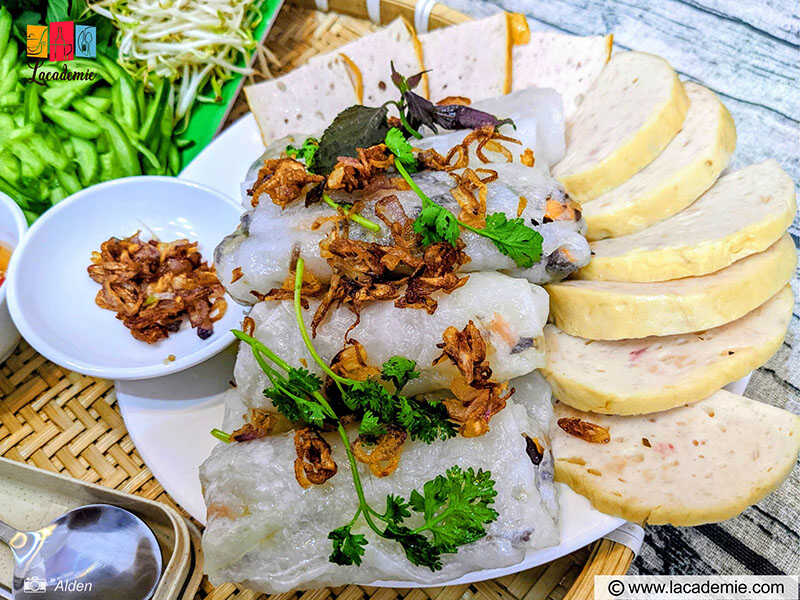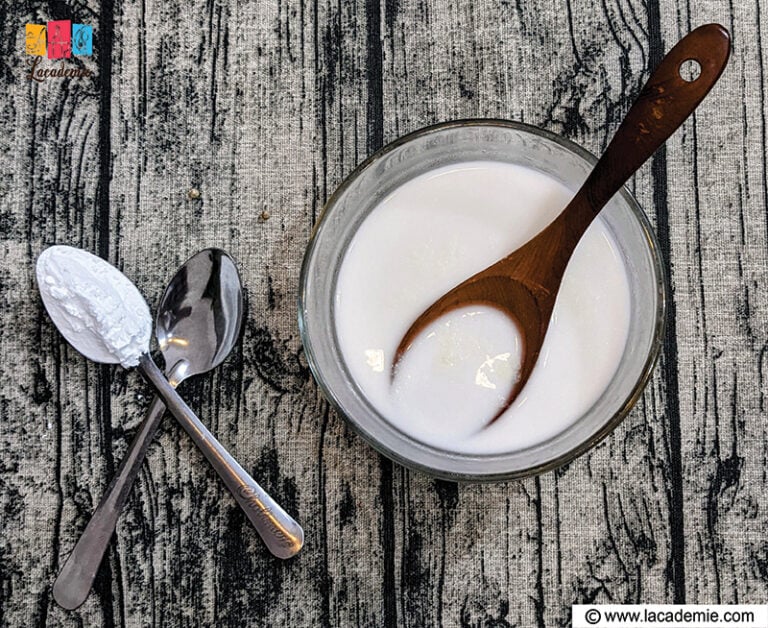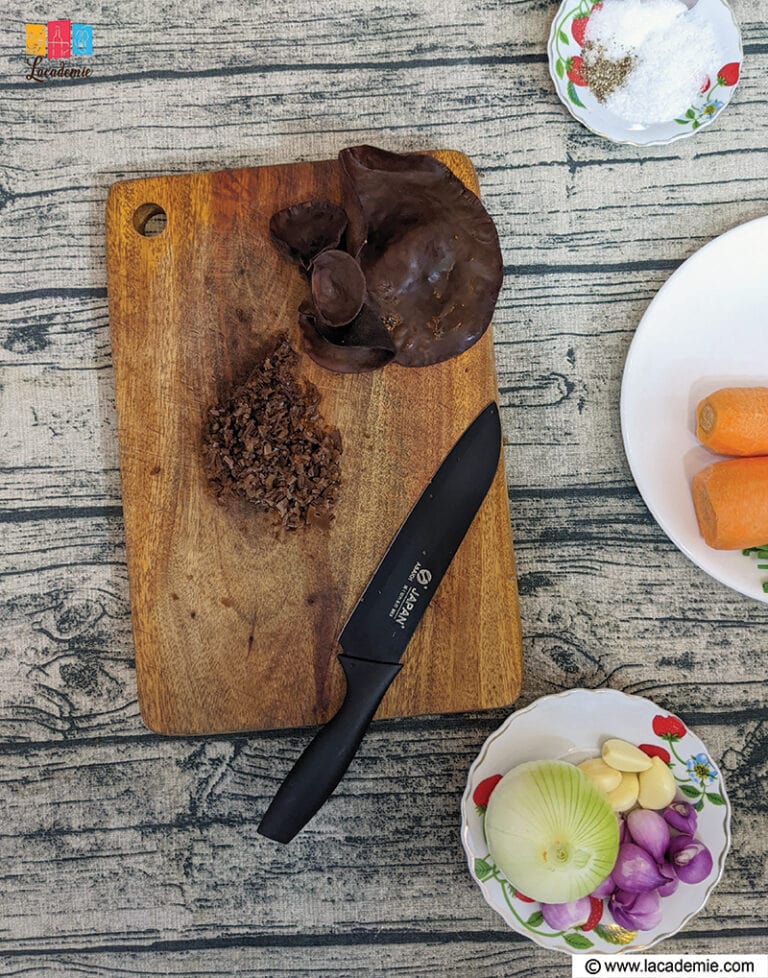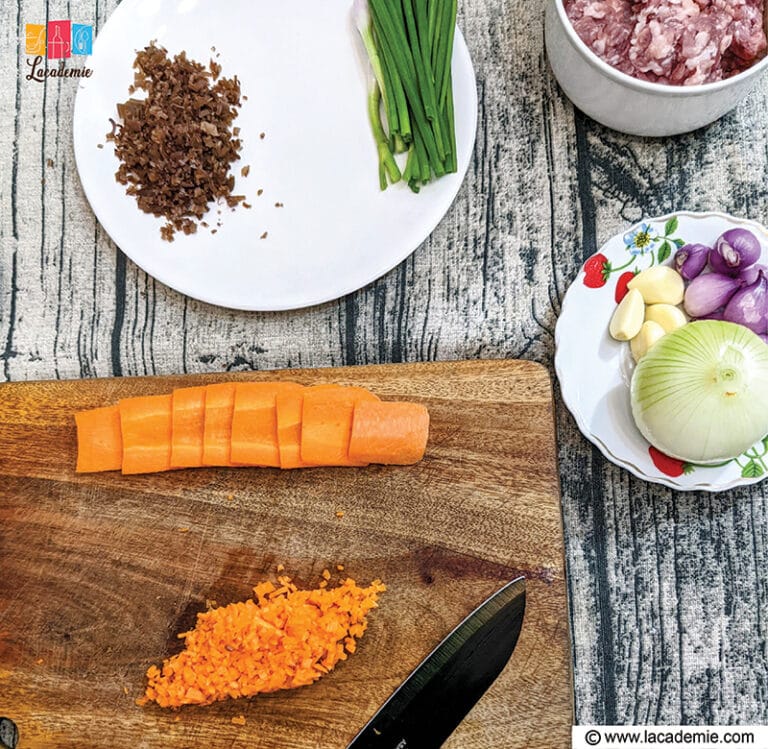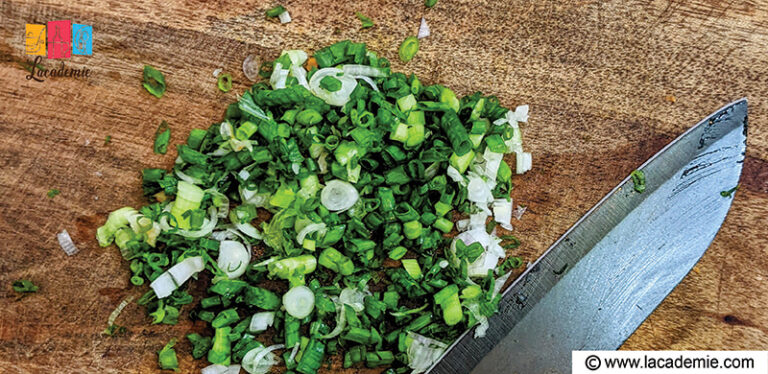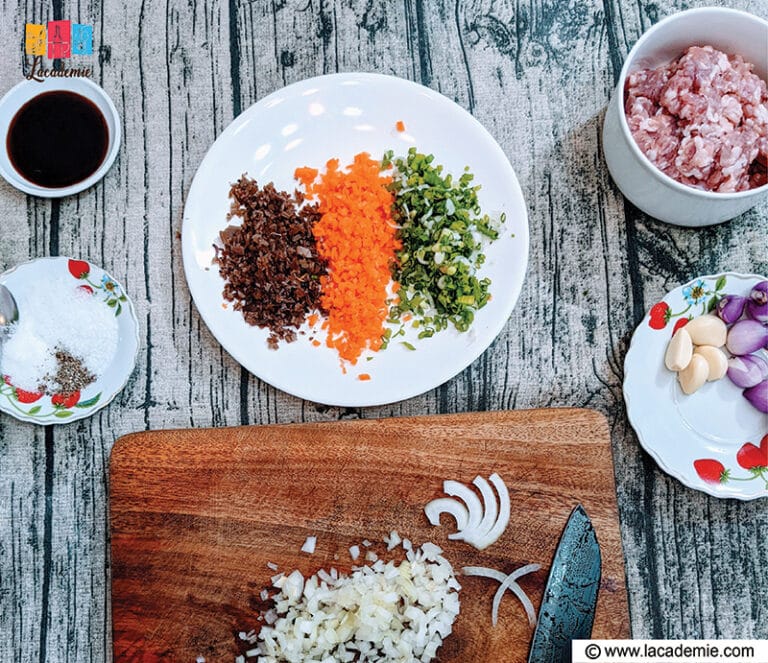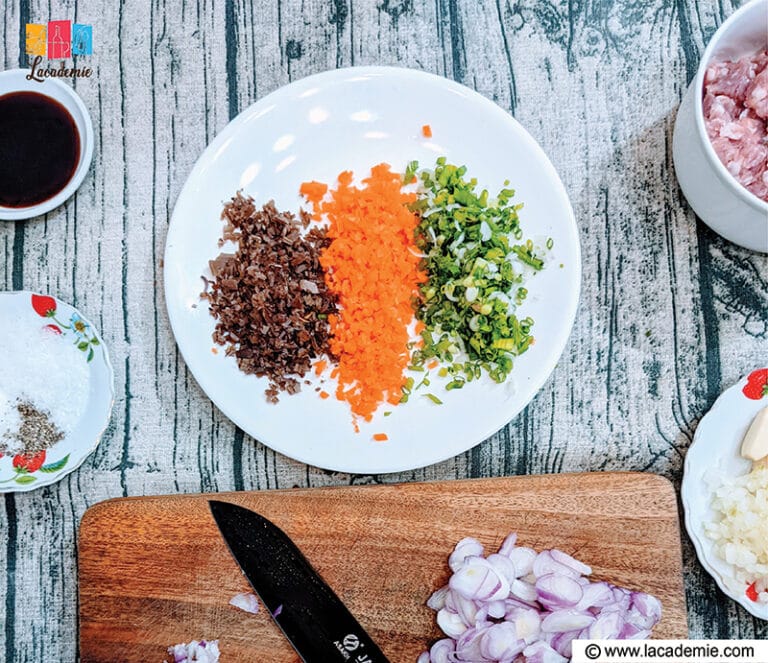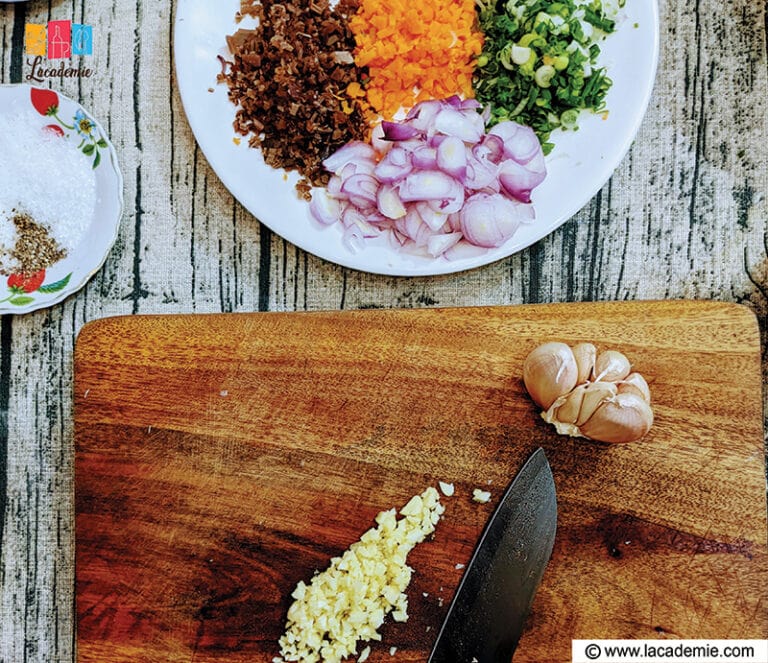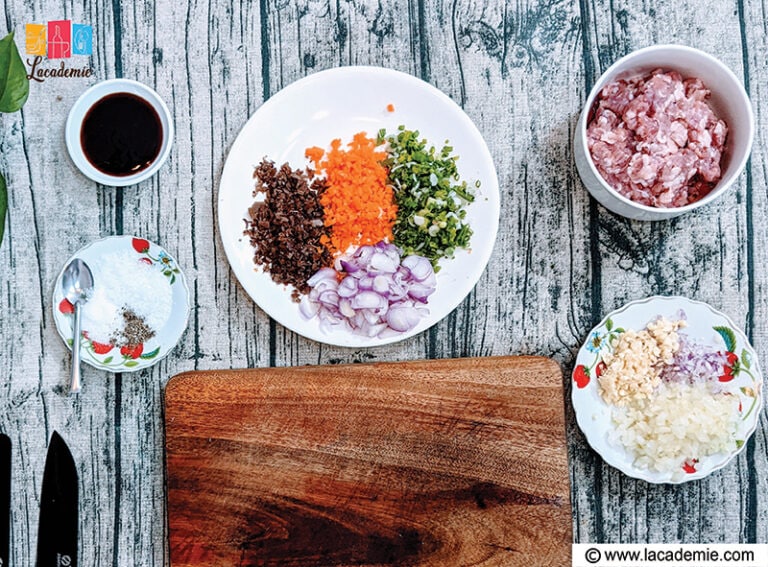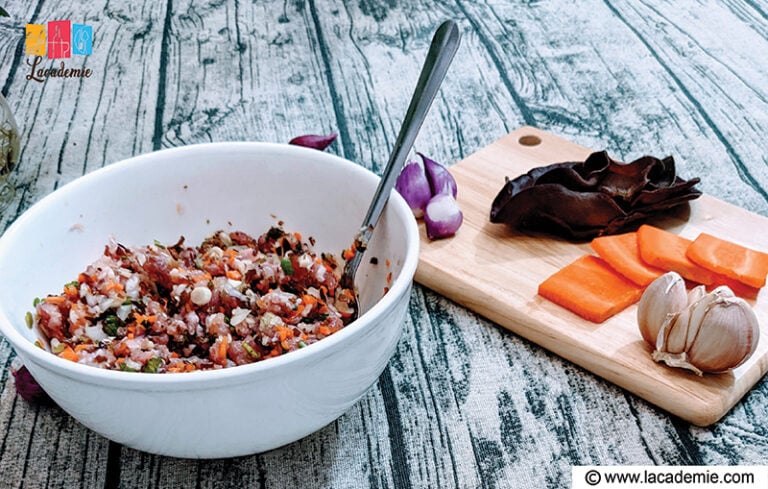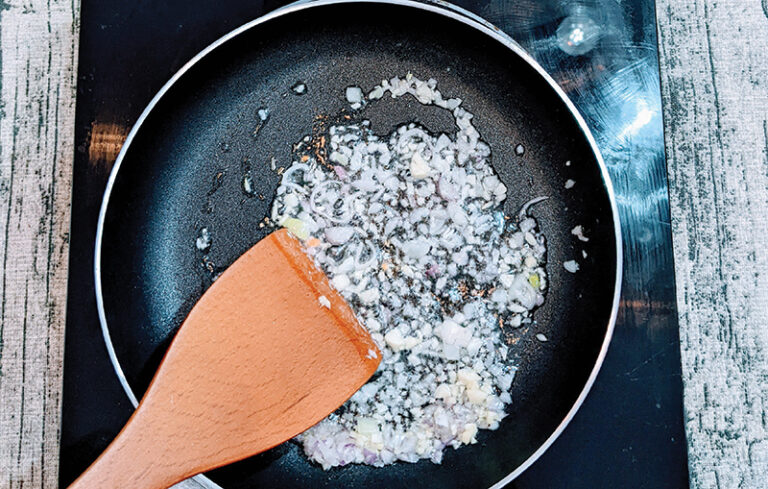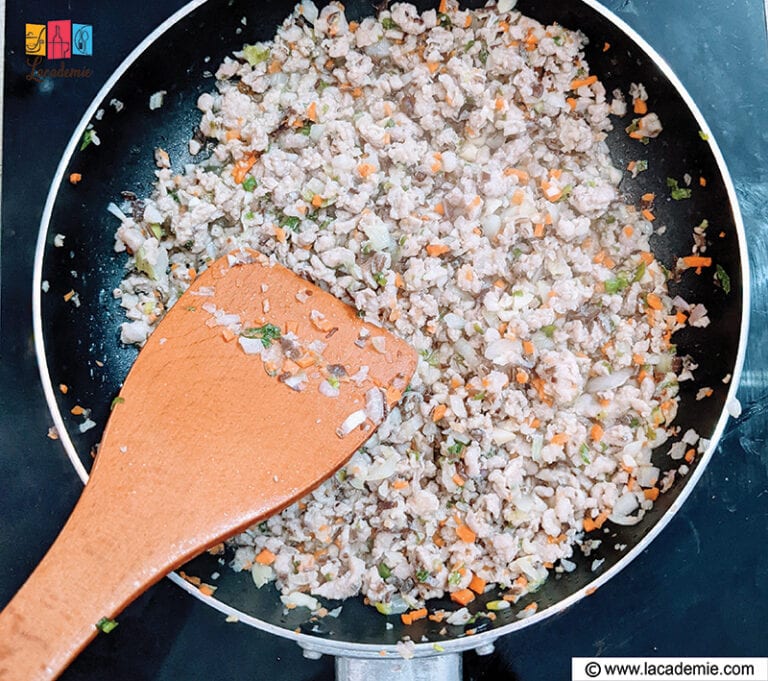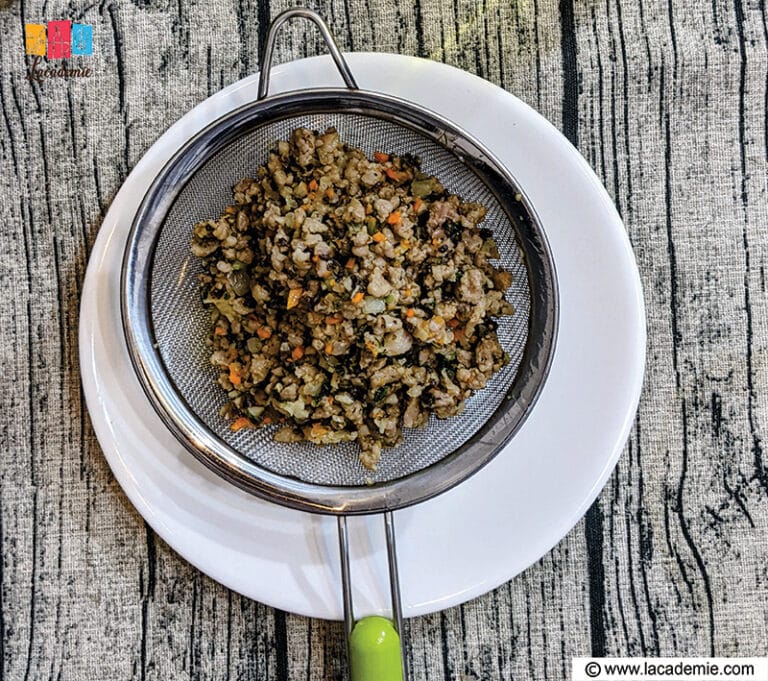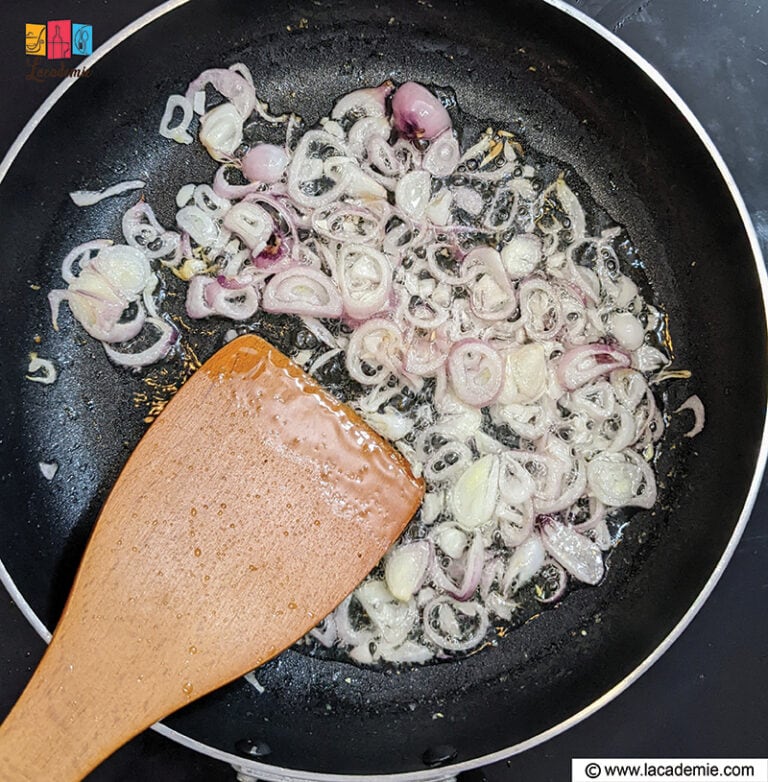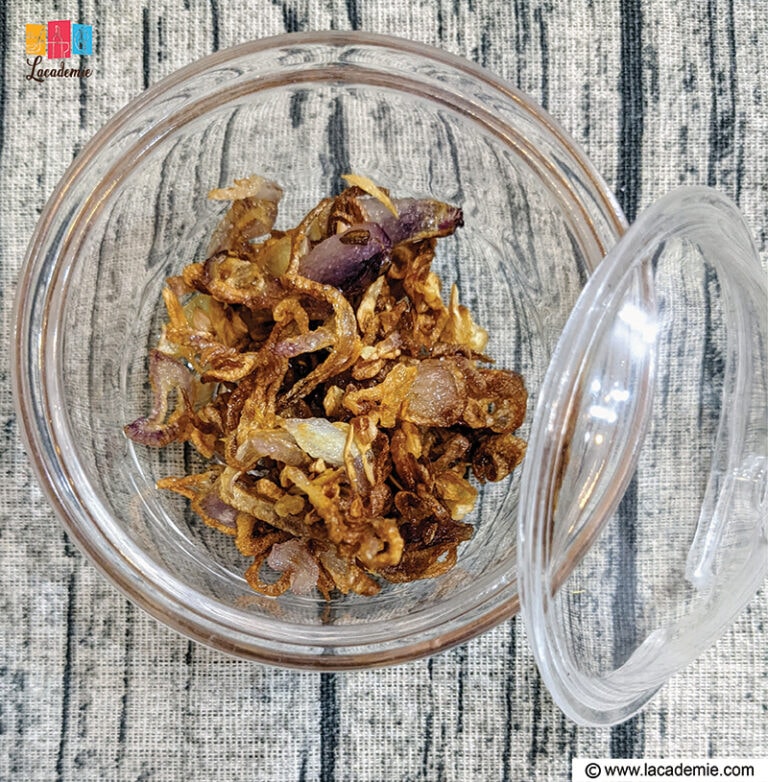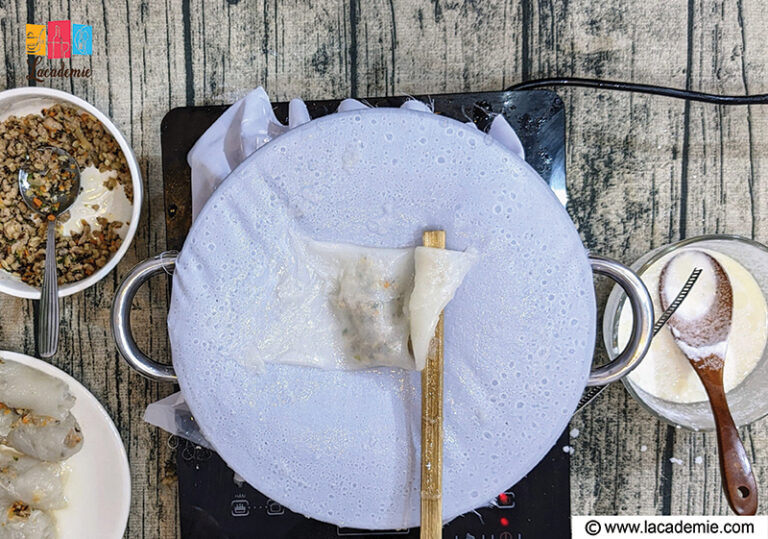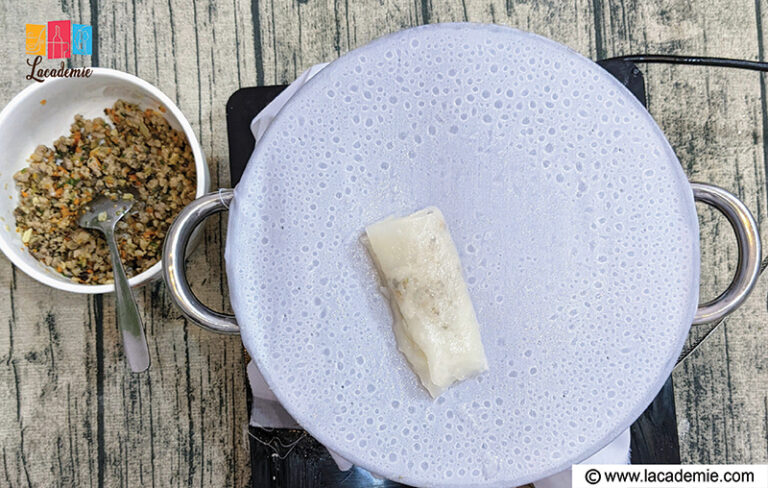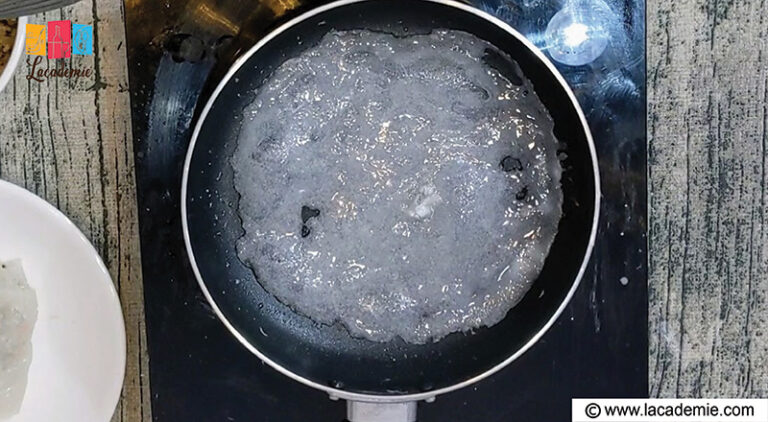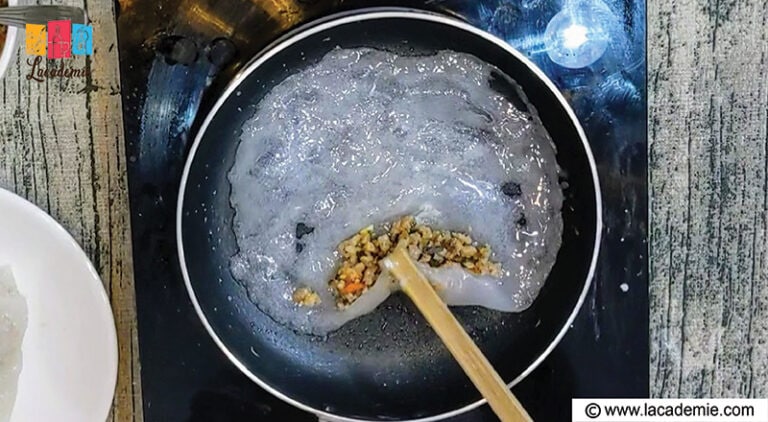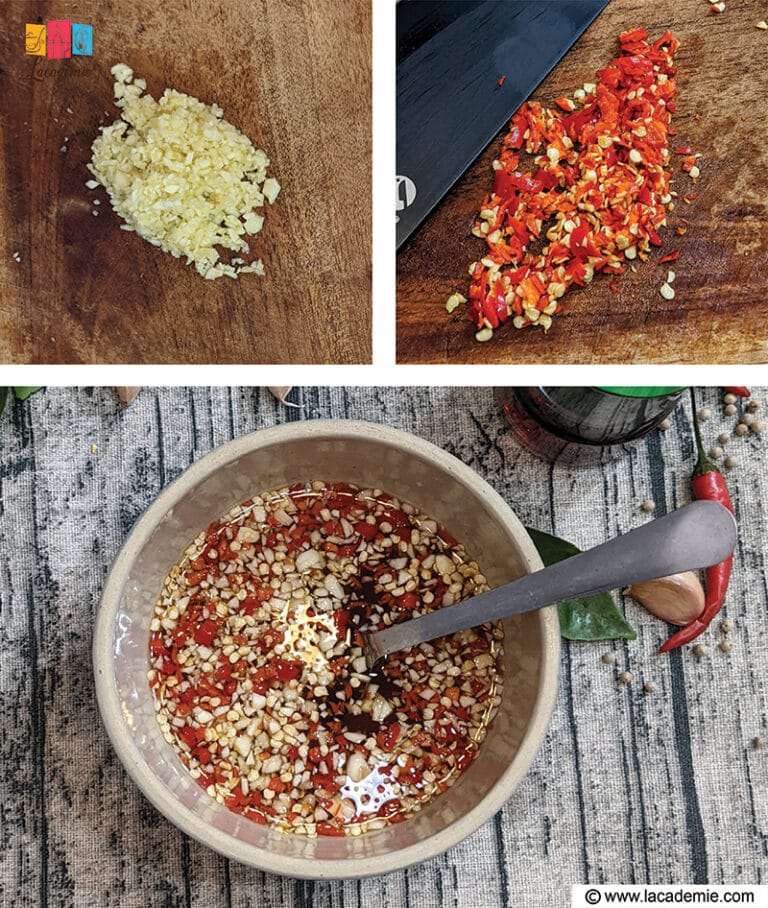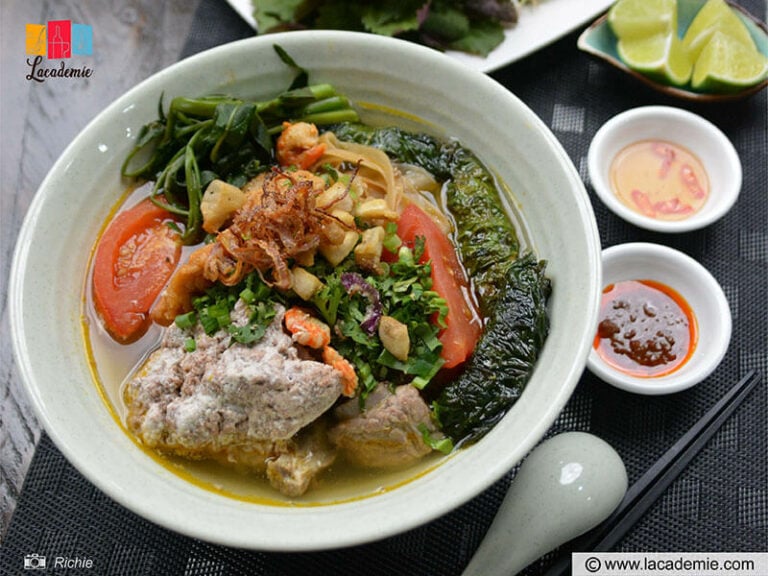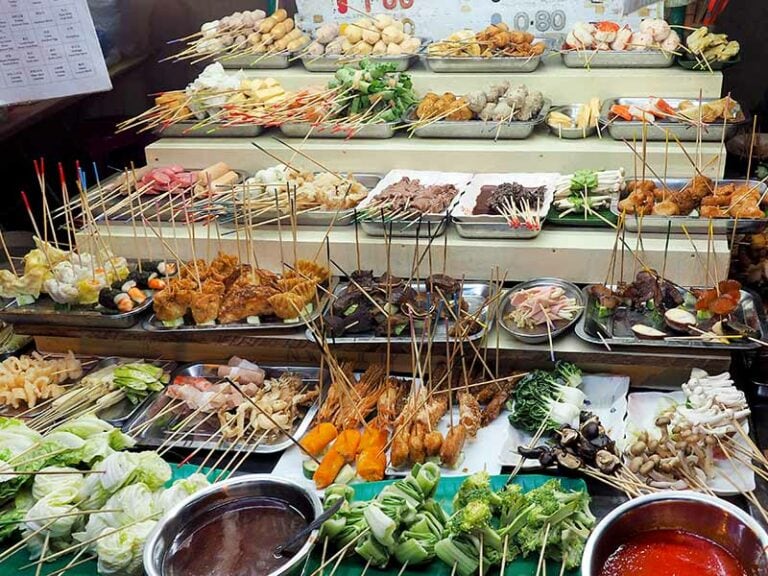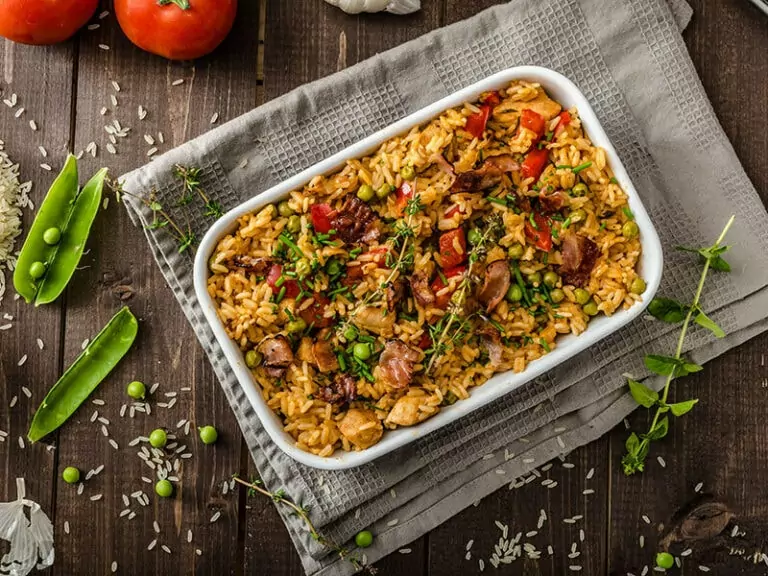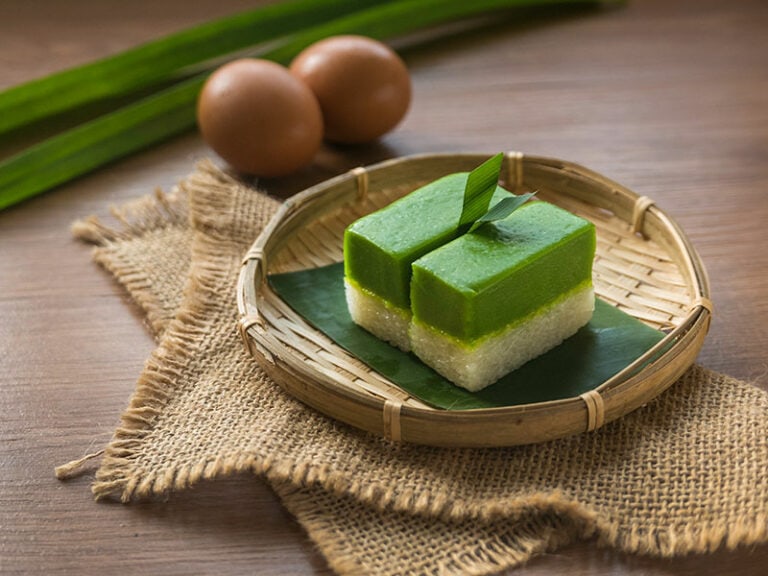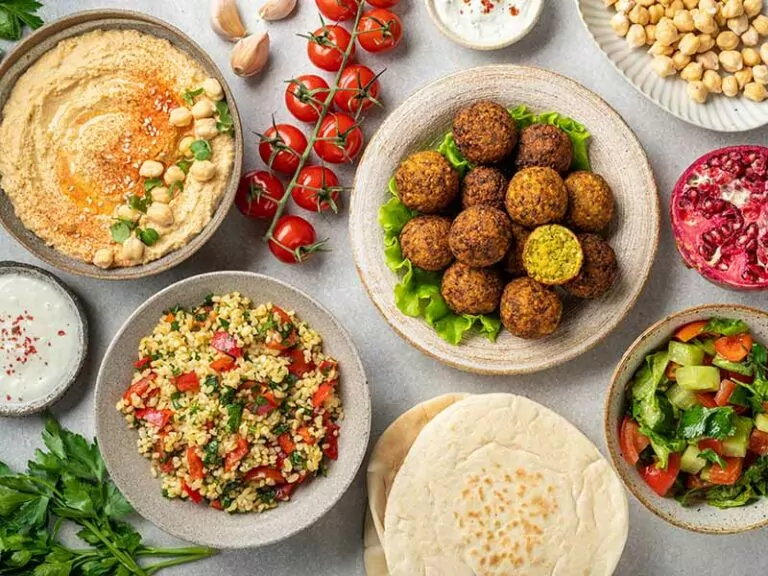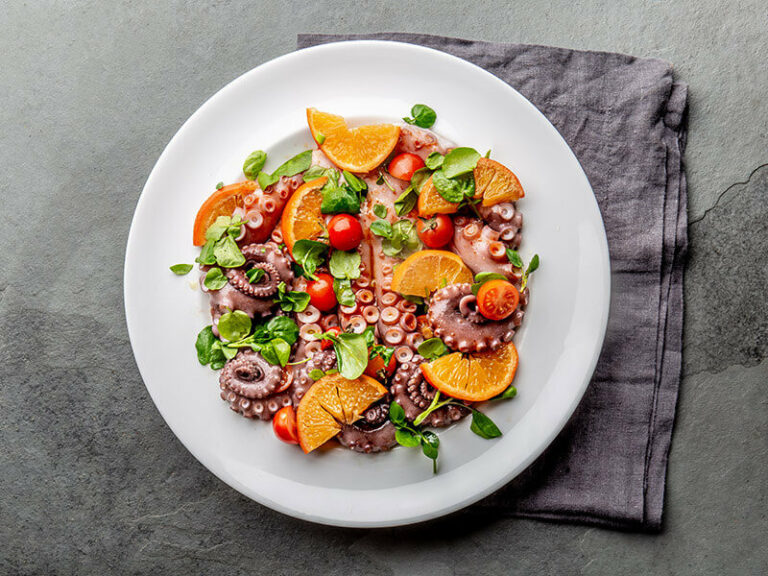When it comes to Vietnamese snack highlights, Vietnamese steamed rolled cakes always top any “the best” list. Actually, they aren’t a snack per se because you can consume a large number of those elegant and gorgeous-looking treats for a full meal.
Each rolled cake is like a work of art, with the white, almost transparent-looking rice batter revealing tantalizing glimpses of the fillings inside. Accompanying the rolls is a delicious dipping sauce whose taste is savory enough to make the driest mouth salivate with expectation.
The making of Vietnamese steamed rolled cakes is an art in itself. However, while it may sound a little complex, this guide will show you an easy way to cook these delights to perfection. This will be a golden opportunity to show off your great cooking skill!
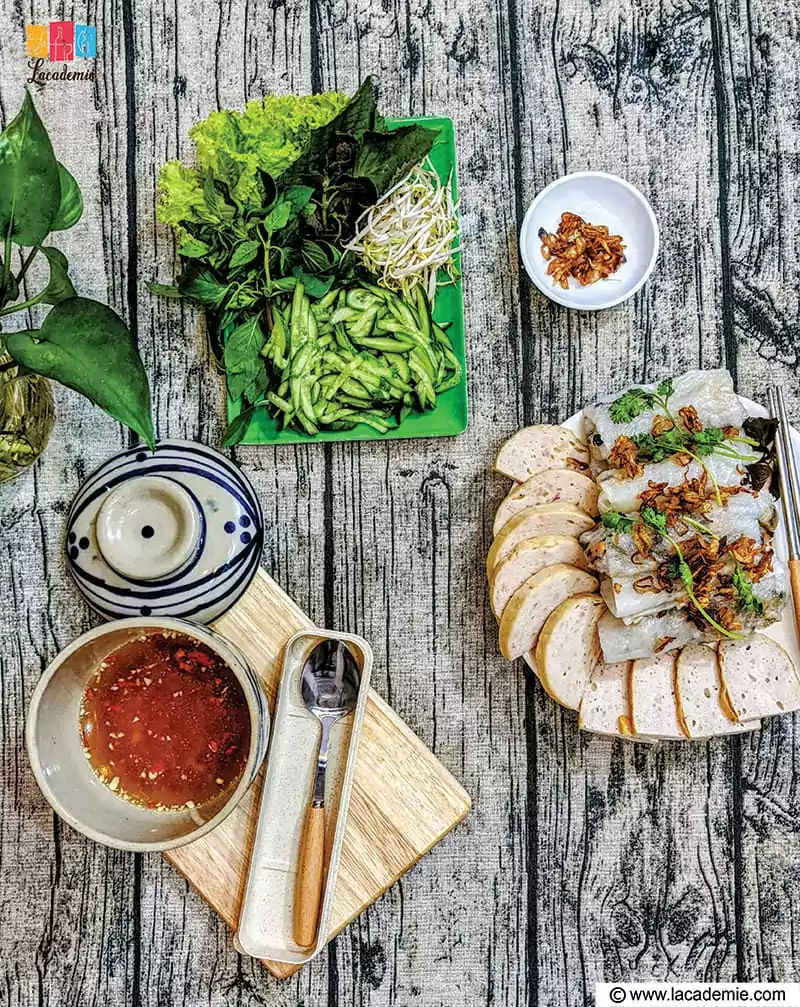
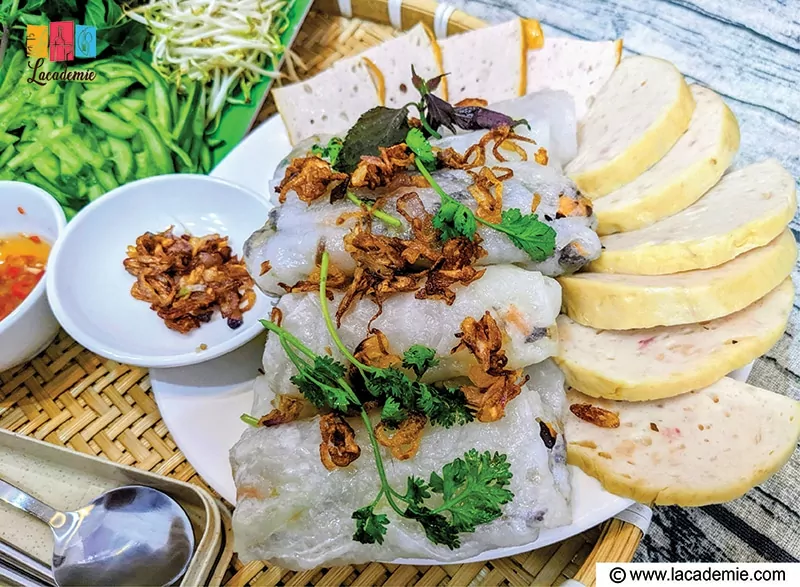
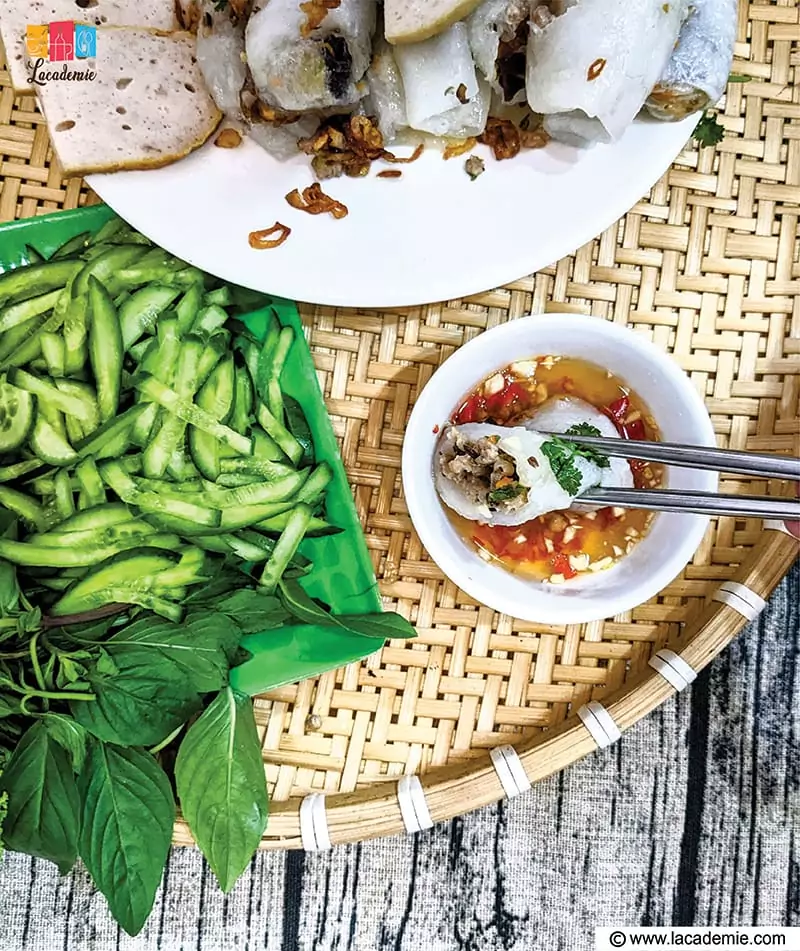
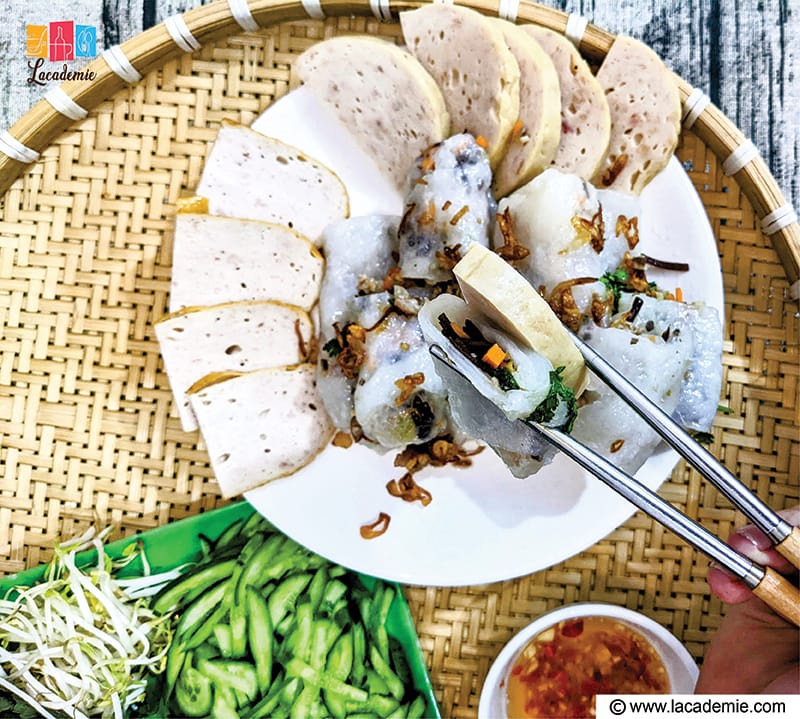
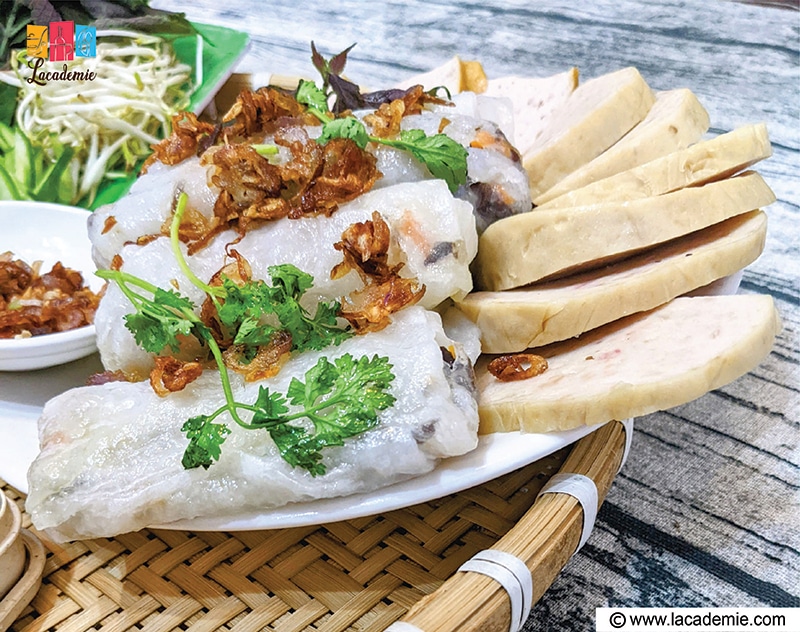
A Few Notes About Vietnamese Steamed Rolled Cakes
Vietnamese steamed rolled cakes are a specialty of the northern region (particularly Hanoi and its neighboring provinces), though you can find a lot of stalls and restaurants selling them all over Vietnam. Their local name is “bánh cuốn”, literally “rolled cakes” or, more correctly, “rolled sheets”.
This delicacy has a long-standing history. It is mentioned in historical records dating back to the Tran dynasty (13th century – 14th century) as a traditional dish.
A rolled cake is usually made of a thin rice batter sheet that wraps around a mixture of minced pork, mushrooms, and herbs. Different localities may use other options for the fillings, such as chicken eggs or meat.
But Vietnamese steamed rolled cakes can’t be complete without their inseparable side dishes and dipping sauces. They have to go with Vietnamese pork sausage (chả lụa) and fresh vegetables, among other things, which makes the dish very healthy and balanced in taste.
Meanwhile, the accompanying sauce must have all the major flavors: saltiness, sweetness, and tartness. It is as vital to the success of the dish as the rolled cakes themselves. Follow this guide, and you will learn how to prepare this feast of colors and flavors!
Tools
Since this is a steamed dish, you should have a steamer to cook it more easily. In case you don’t have that appliance, I also include a method using an ordinary nonstick pan. Each one has its own pros and cons; choose the most suitable way for you.
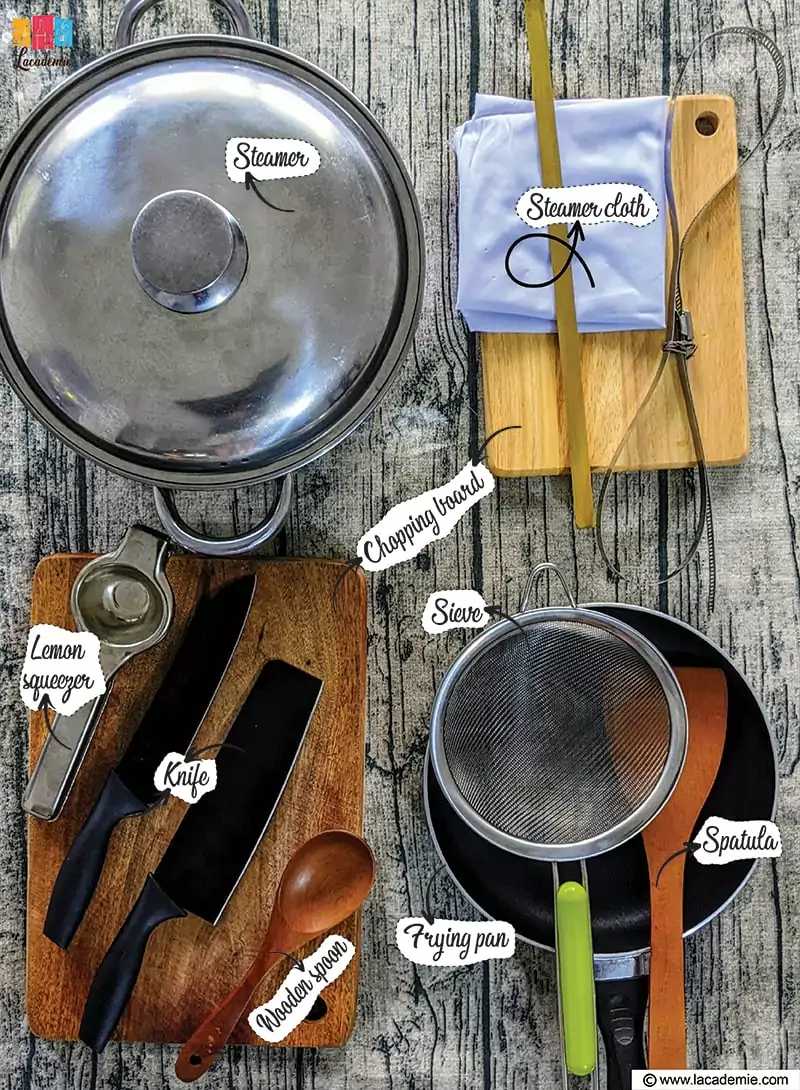
With A Steamer
This appliance makes it easier to cook the rice batter to perfection. Its large size allows you to form the rice sheets and remove them effortlessly. However, you will have to make an additional investment if you don’t have a steamer at hand.
Besides, you have to spend some time waiting for the water to be hot enough to make the steamer work, not to mention that cleaning up the steamer after use is also more difficult. In short, people committed to the highest quality of the dish should use this approach.
Steamer: A large one will allow you more room to work the rice batter into thin sheets.
Steamer cloth: You will form the rice batter sheets directly on a piece of fabric stretching over the steamer. Make sure that it is nonstick. You can use a belt to keep the cloth in place.
Bamboo chopsticks: remove the sheets after cooking as well as roll them up. Choose the extra long products (at least 30 centimeters or 12 inches) to avoid contact with the heat.
Chopping knife and board: to prepare the ingredients for the filling.
Spatula: to stir the ingredients for the filling during cooking.
Frying pan: to cook the ingredients for the filling.
Sieve: to drain the cooked filling.
Lemon squeezer: optional.
With A Nonstick Pan
Every kitchen certainly has a nonstick frying pan for cooking, meaning you don’t have to buy more tools to make this dish. This appliance also helps save time because you don’t have to wait for the water to boil like with the steamer.
The downside is you can’t handle the sheets of rice batter in a pan as smoothly as in a steamer, so expect some difficulties along the way. If you like convenience, this approach is for you.
Nonstick frying pan: choose a large and, preferably, deep one to cook the rice batter sheets more easily.
Bamboo chopsticks: remove the sheets after cooking. Choose the extra long products (at least 30 centimeters or 12 inches) to avoid contact with the heat.
A large spoon or ladle: pour the rice batter into the pan.
Chopping knife and board: to prepare the ingredients for the filling
Spatula: to stir the ingredients for the filling during cooking.
Frying pan: to cook the ingredients for the filling.
Sieve: to drain the cooked filling.
Lemon squeezer: optional
Ingredients
If you think the number of tools is large, wait until you see the list of ingredients! But don’t worry: you can find most of them in any supermarket, though a few herbs and sauces are more likely to be found at an Asian grocery store.
For The Rice Batter
Rice flour: this is the main ingredient of the batter. You should buy a reliable brand for the best quality. Vietnamese people like to make rice flour from old uncooked rice, which has less starch and consequently produces less sticky rice flour.
Tapioca flour: helps the ingredients bind together better.
Oil: makes the batter fattier and thus more delicious.
Salt: increases the integrity of the batter.
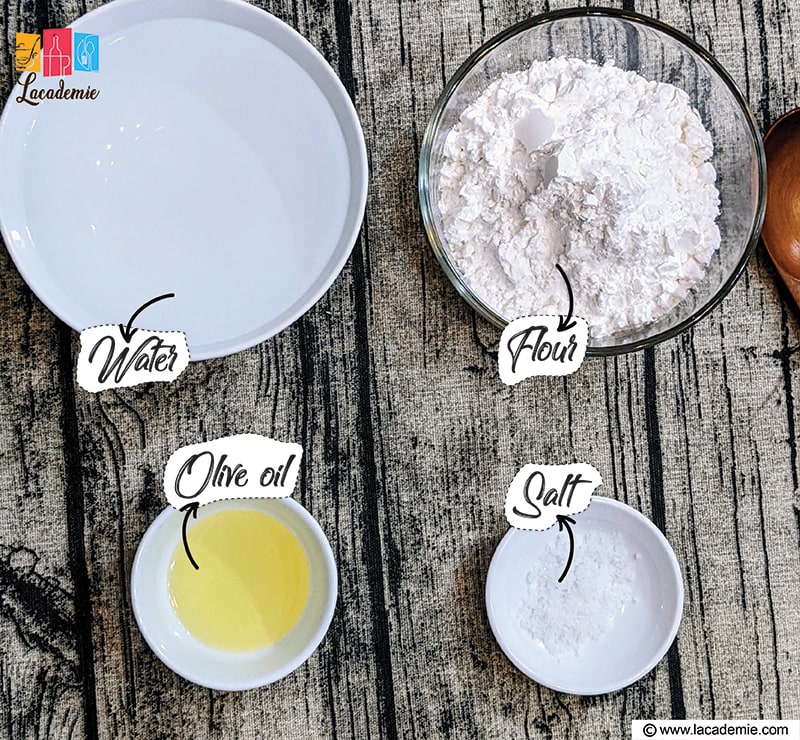
For The Filling
Minced pork: Choose the type of pork mince that combines both lean and fatty cuts of meat so that you can enjoy extremely savory rolled cakes.
Wood ear mushrooms: They have a crunchy texture that makes the filling so pleasing to bite. You can also add chopped shiitake mushrooms to the mix to enrich the flavor.
Vegetables: carrots, shallots, onions, and scallion. They balance the flavor and texture of the filling.
Garlic: its strong aroma will make the fillings more mouth-watering.
Seasoning: oyster sauce, salt, sugar, black pepper, and MSG. You need to cook the above ingredients with the right spices to bring out the best flavor.
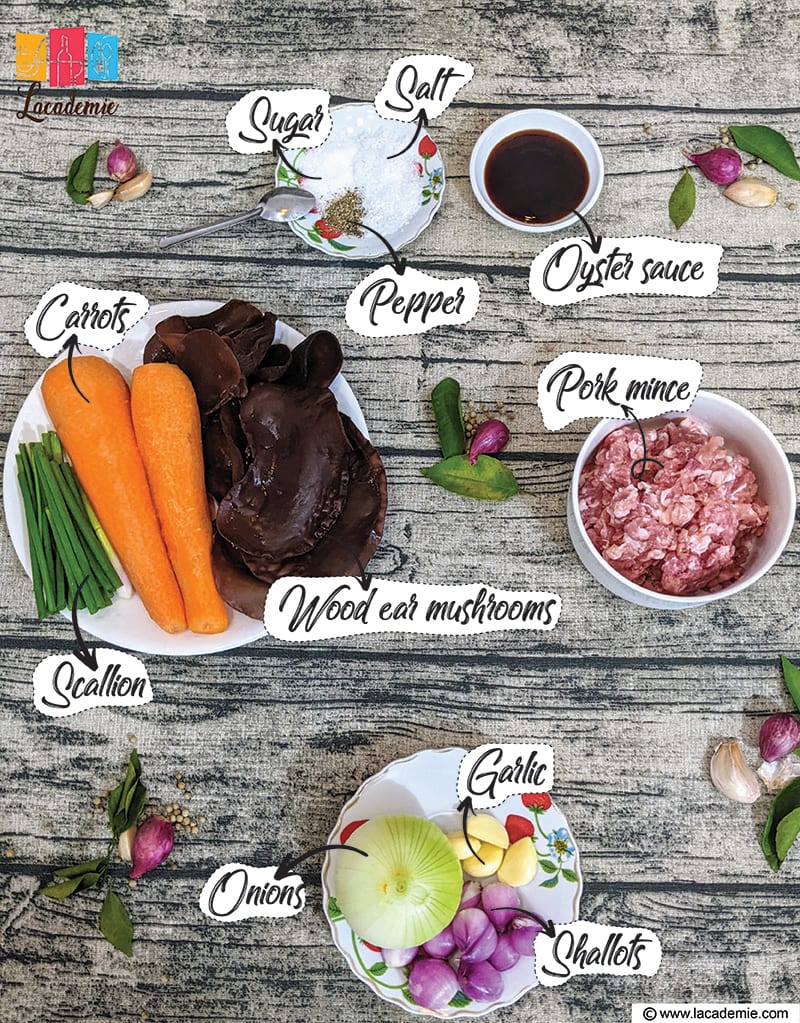
For The Dipping Sauce
Vietnamese fish sauce (nước mắm): This is the soul of the sauce as well as the whole dish, so make sure you choose an authentic Vietnamese brand. It can be a little too salty and have a strong smell, but you can buy exported products that tend to be mild in taste to suit local preferences.
Lemon juice: adds a touch of tartness to the sauce.
Sugar: contributes a sweet taste to the sauce.
Garlic and red chili: diversity the sauce with their strong and spicy flavor.
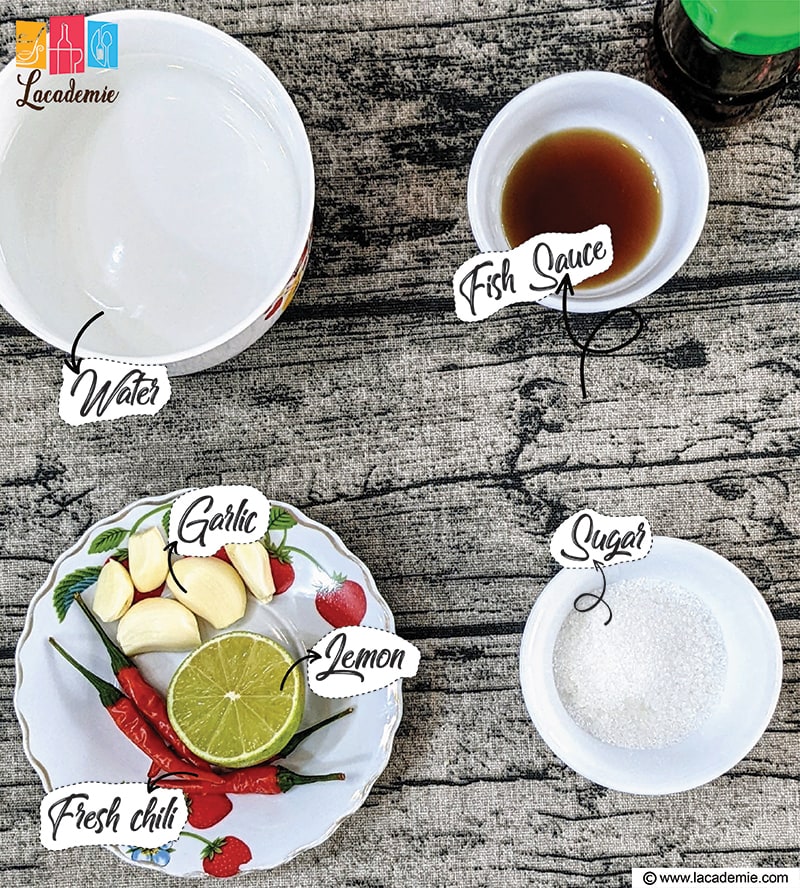
For The Side Dishes
Vietnamese pork sausage (chả lụa): is the most popular accompaniment for Vietnamese rolled cakes.
Vietnamese cinnamon pork pate (chả quế): while Vietnamese pork sausage is always steamed, this food is often baked or roasted. Therefore, this combo boasts many diverse flavors to enrich your rolled cakes.
Fresh herbs and vegetables: the most common choices are cucumber, bean sprouts, lettuce, perilla, basil, fish mint, peppermint, etc. Feel free to add your favorite veggies: the more, the merrier.
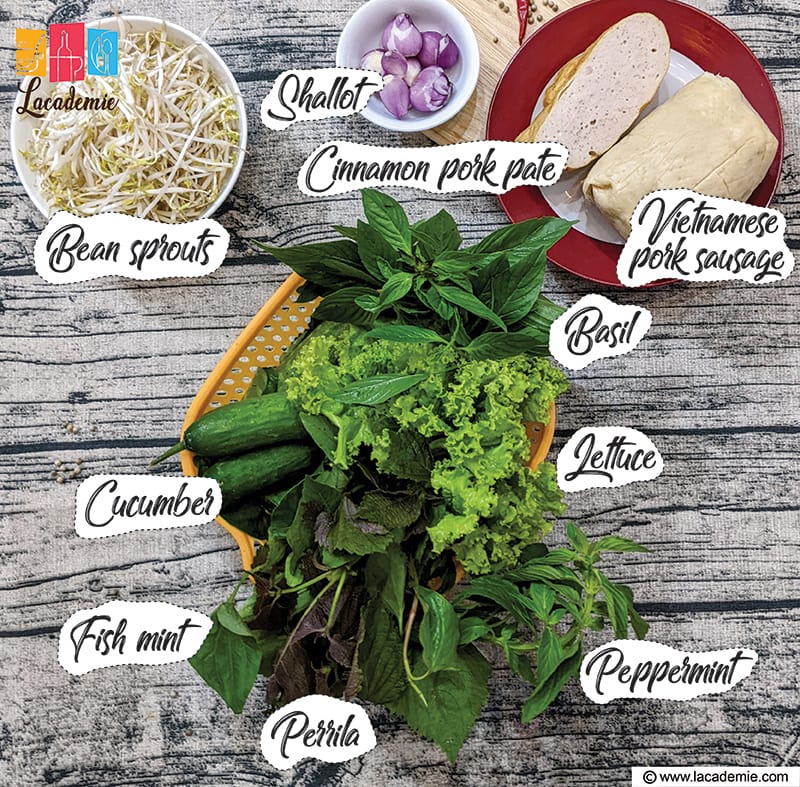
How To Cook Vietnamese Rolled Cakes Like A Local
Are you ready for your cooking acumen to shine? Making Vietnamese rolled cakes is an art that demands skills and care; you are about to create the masterpiece of your life.
Step 1: Prepare The Rice Batter
Mix rice flour and tapioca flour in water. Stir the mixture well to avoid forming lumps. When the flour is completely dissolved, add salt and oil to the mixture and stir well. Let the batter rest for 20 – 30 minutes.
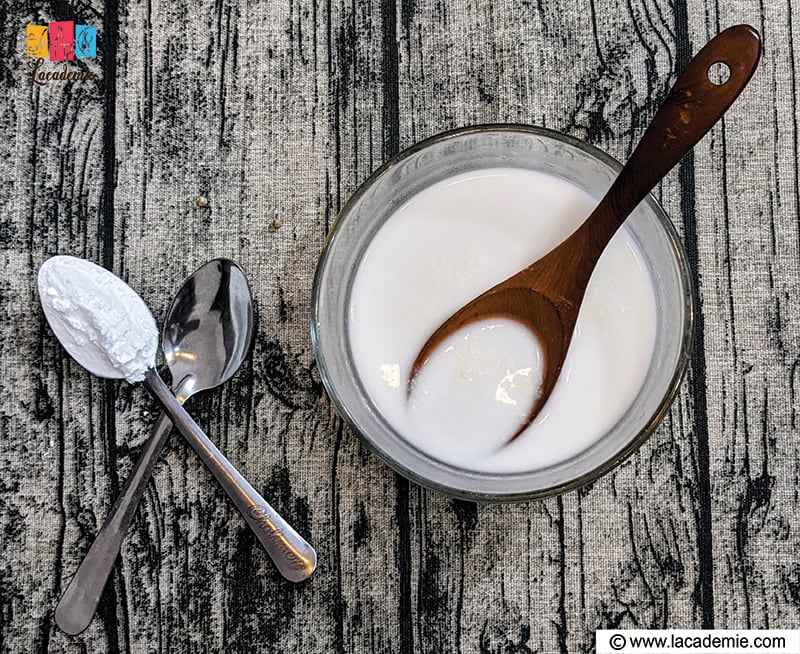
Step 2: Prepare The Filling
Chop wood ear mushrooms, carrots, onions, shallots, and scallion finely.
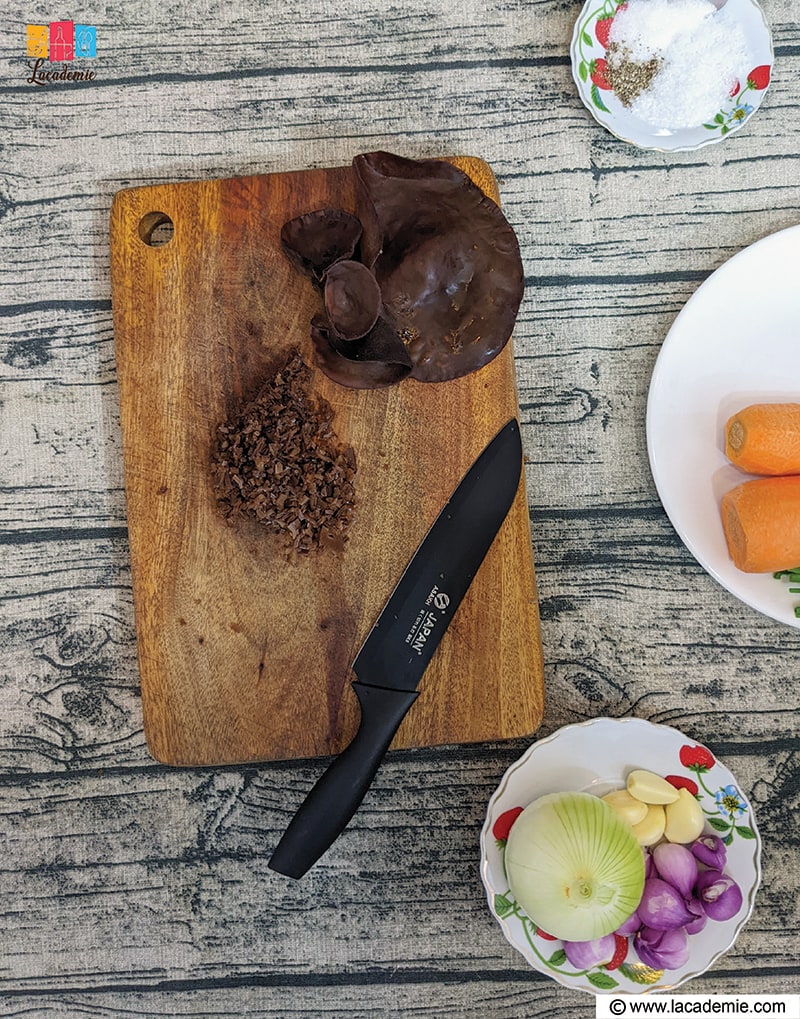
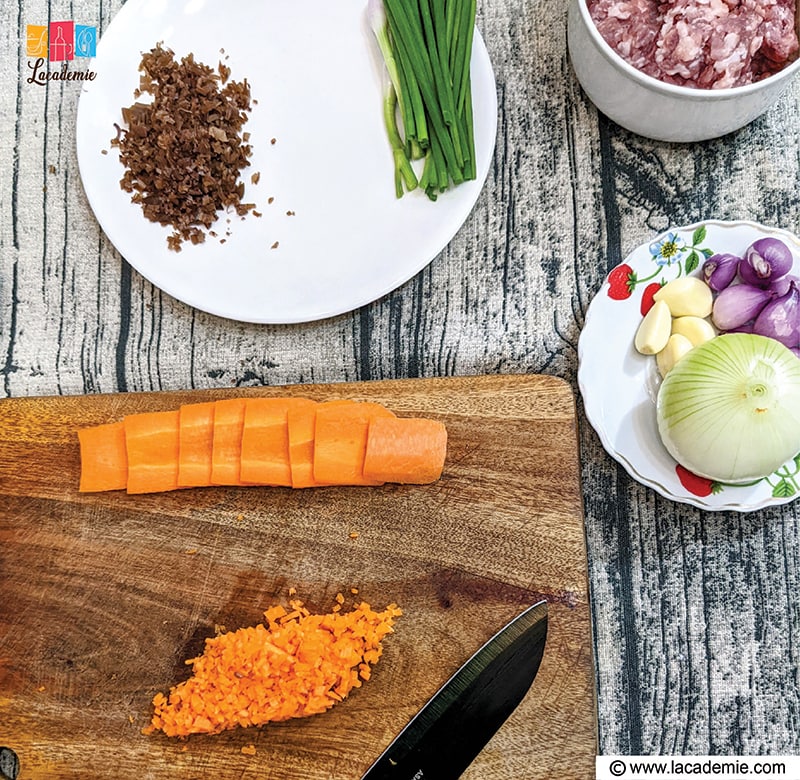
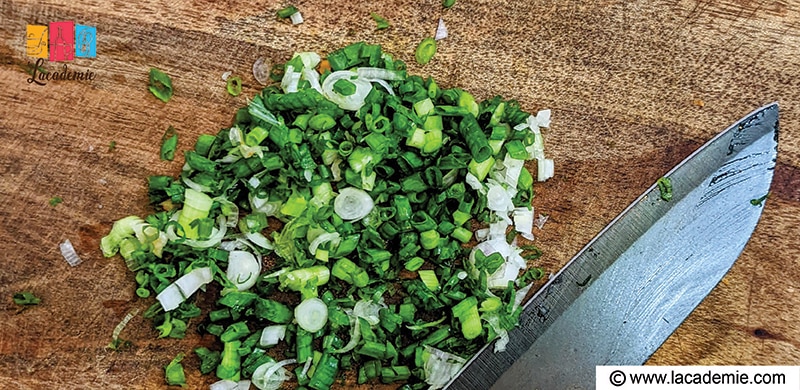
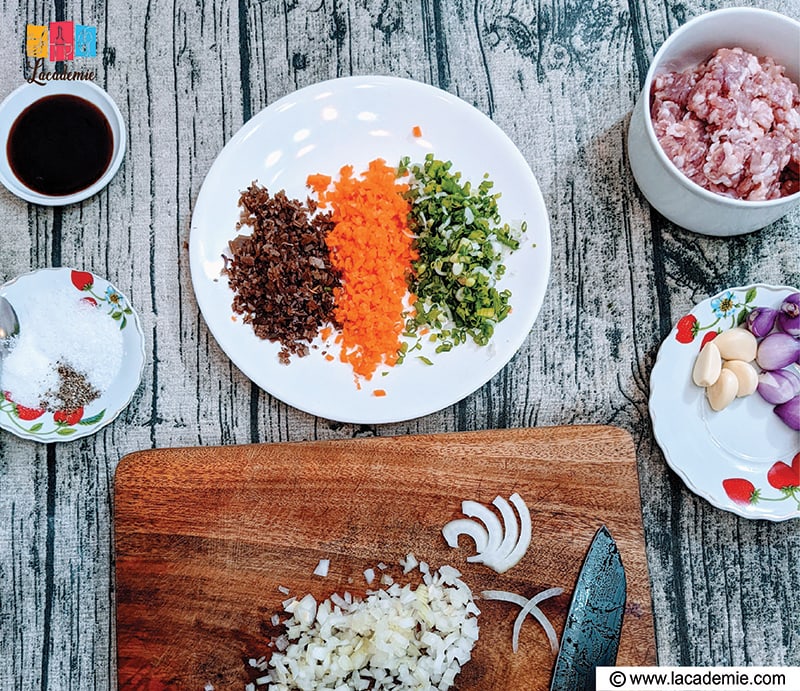
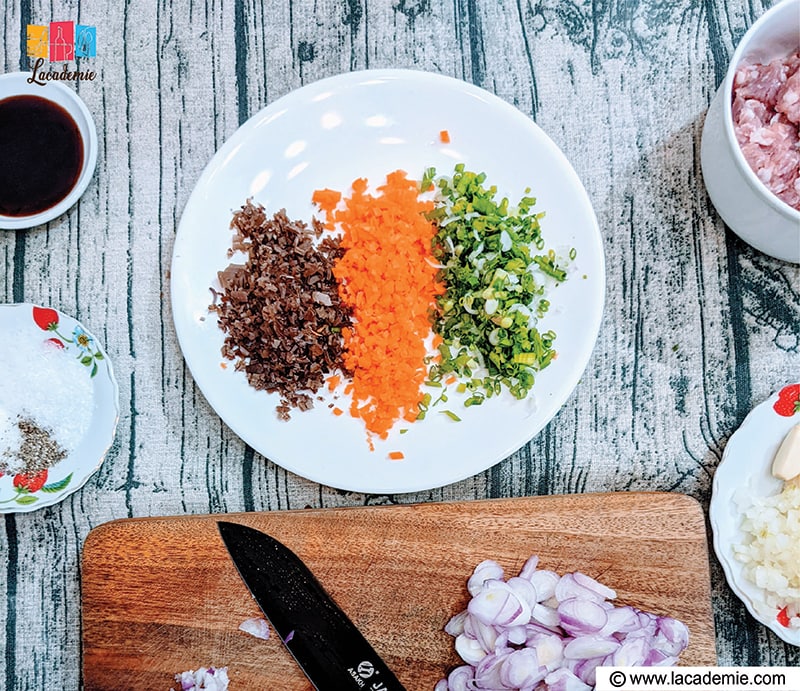
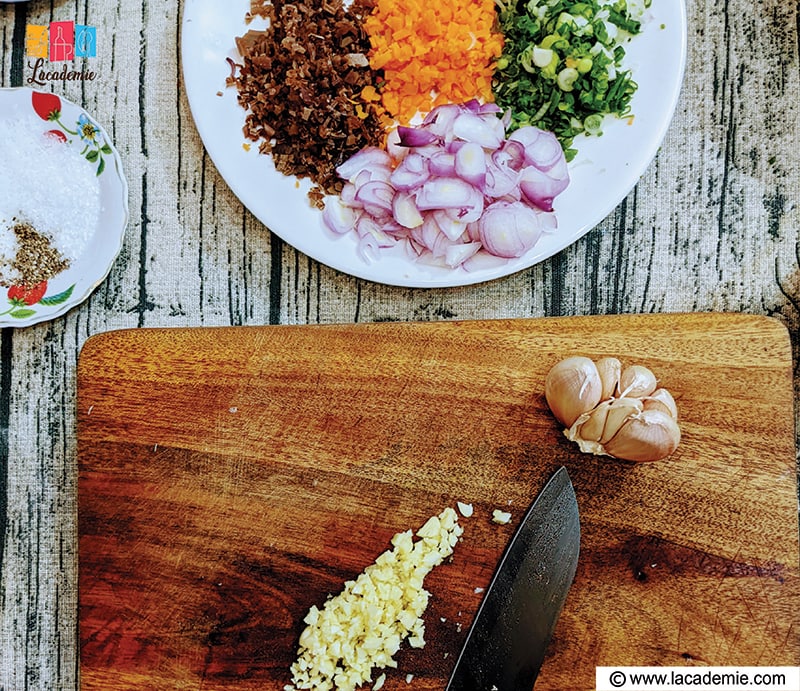
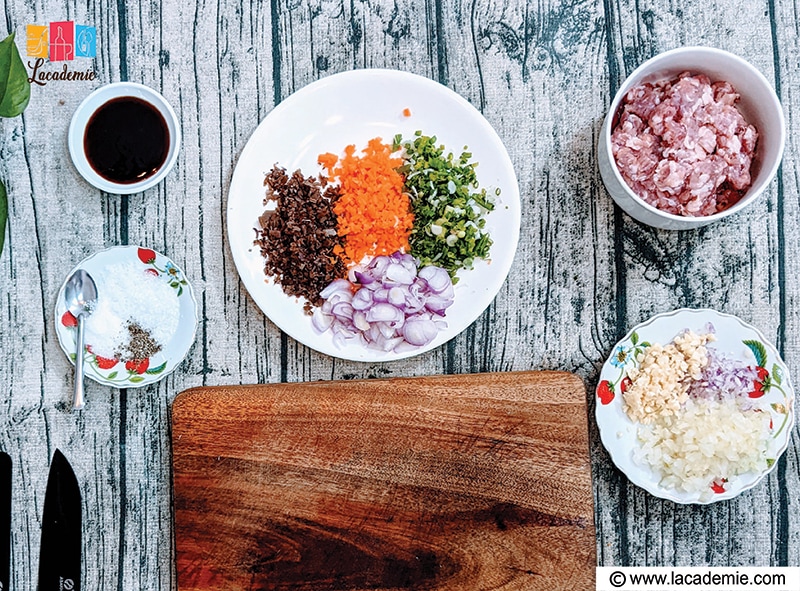
Set aside some shallots to make toppings. Mix the rest with pork mince and seasoning (soy sauce, salt, sugar, black pepper, and MSG).
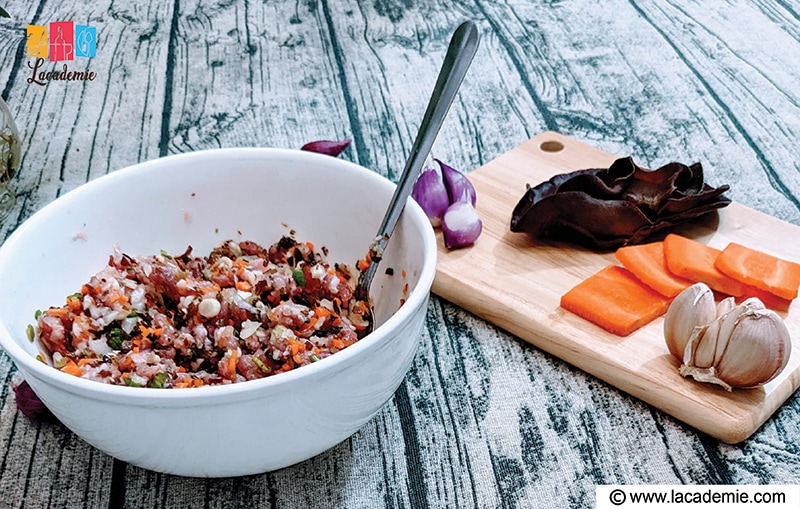
Heat the oil in a skillet over medium heat, then add some minced garlic and shallots. Cook until fragrant, then add the pork mince mixture. Turn up the heat and cook over high heat. Stir everything well until it is just done. Add some oyster sauce and continue stirring.
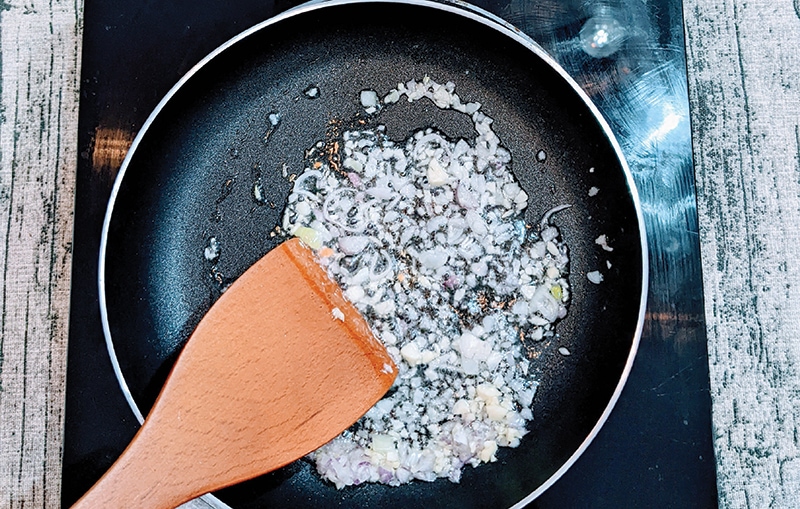
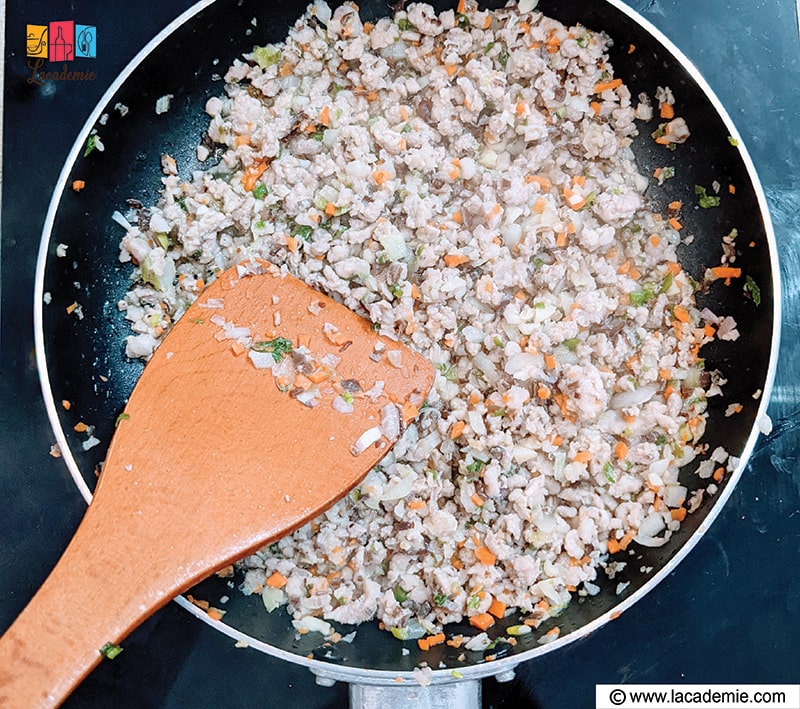
Remove the cooked filling and let it drain for 10 minutes.
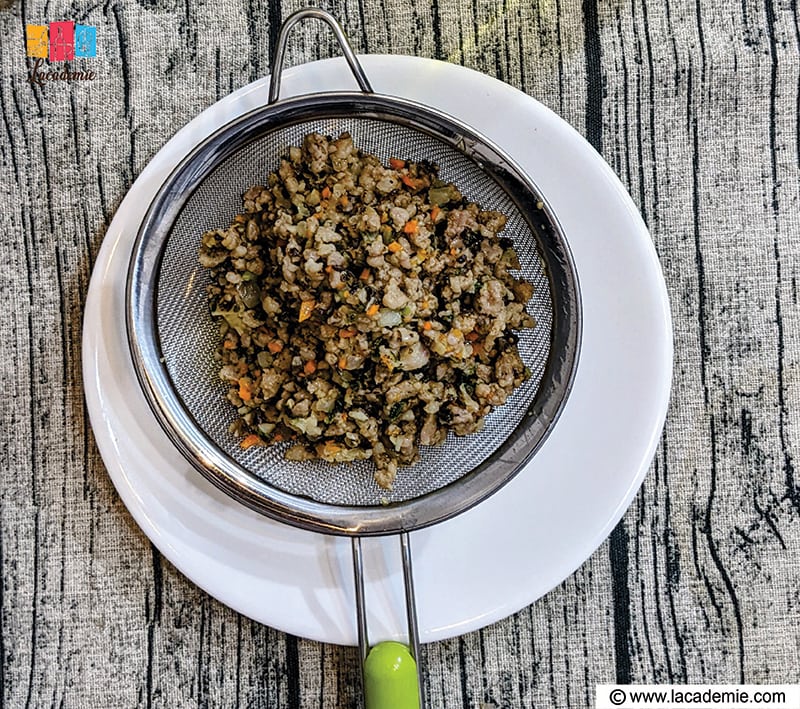
Step 3: Make Fried Shallot Topping
Cook some fried shallots in the skillet and set them aside to use as toppings for the finished dish.
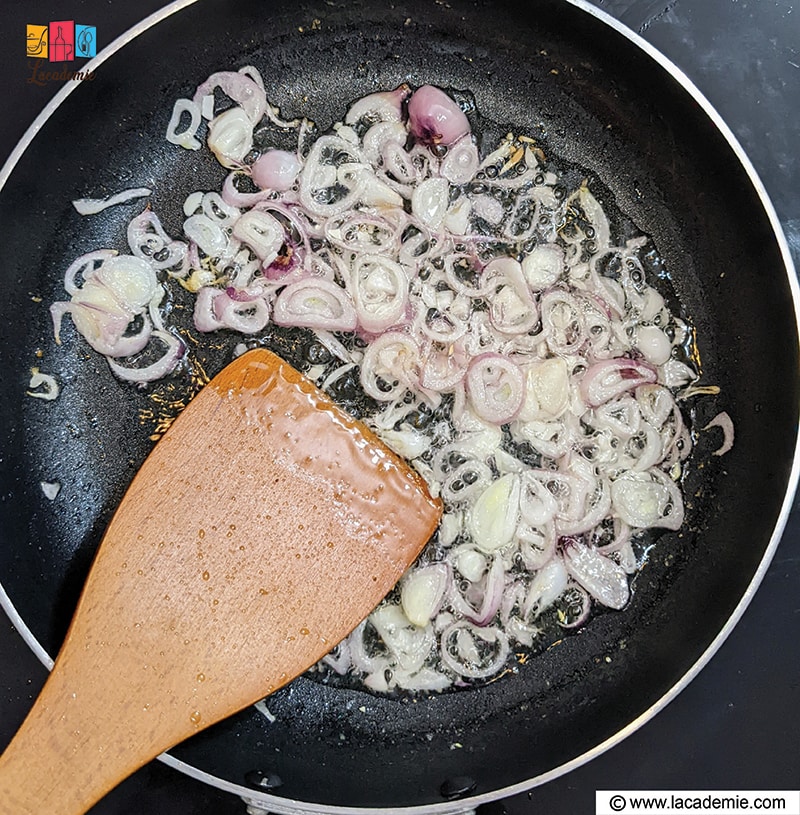
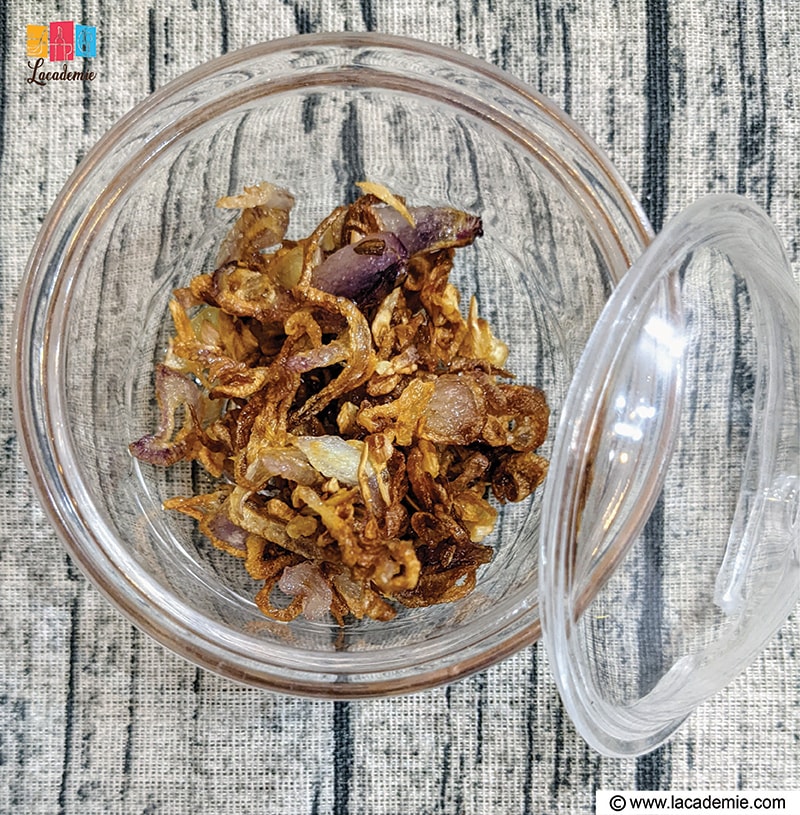
Step 4: Cook The Rice Batter Sheets And Roll The Cakes
There are 2 ways to carry out this recipe, feel free to choose the method that you find easier.
With A Steamer
Place the steamer and fill it with water. Bring to a boil with steam rising from the pot. Stretch the steaming cloth over the steamer. You can coat it with a thin layer of oil.
Pour a large spoon or ladle of rice batter onto the cloth and spread it out thinly and evenly into a round shape. Close the lid and wait for 30 – 40 seconds.
Open the lid and check whether the sheet has turned semi-transparent. If it has, you can spread the pork filling on the sheet and roll it up with a bamboo chopstick. Otherwise, continue to cook the sheet until it is clear-looking.
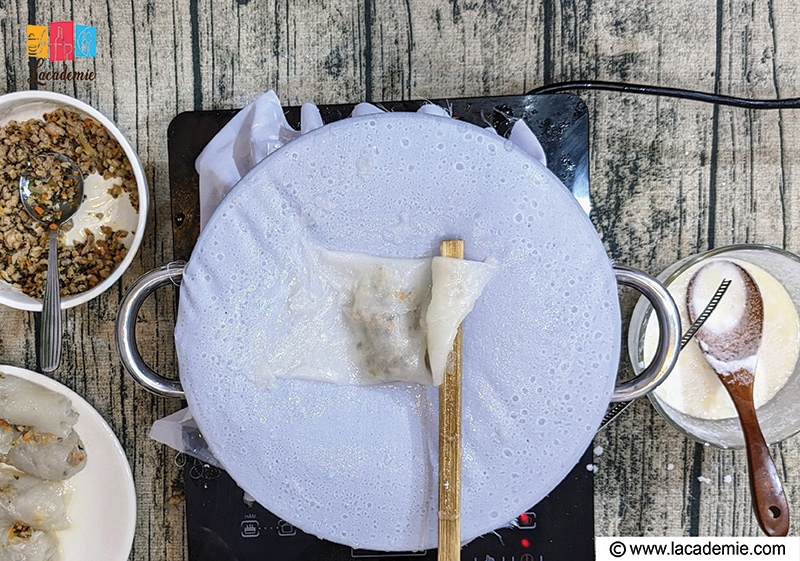
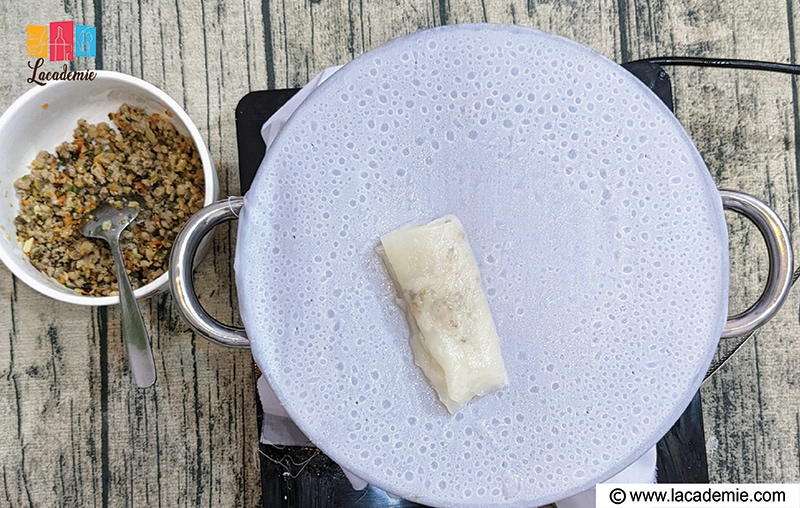
With A Nonstick Pan
Coat the pan with a thin layer of oil. Pour a large spoon or ladle of rice batter onto the cloth and spread it out thinly and evenly into a round shape. Close the lid and wait for 30 – 40 seconds.
Open the lid and check whether the sheet has turned semi-transparent. If it has, you can spread the pork filling on the sheet and roll it up with a bamboo chopstick and a large spoon. Otherwise, continue to cook the sheet until it is clear-clooking.
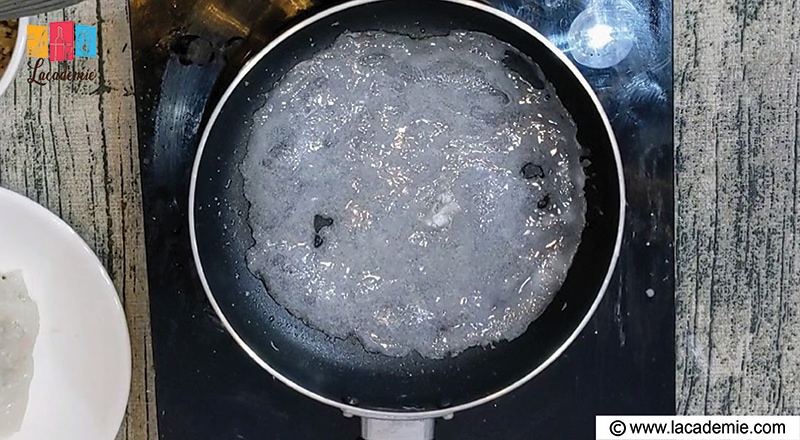
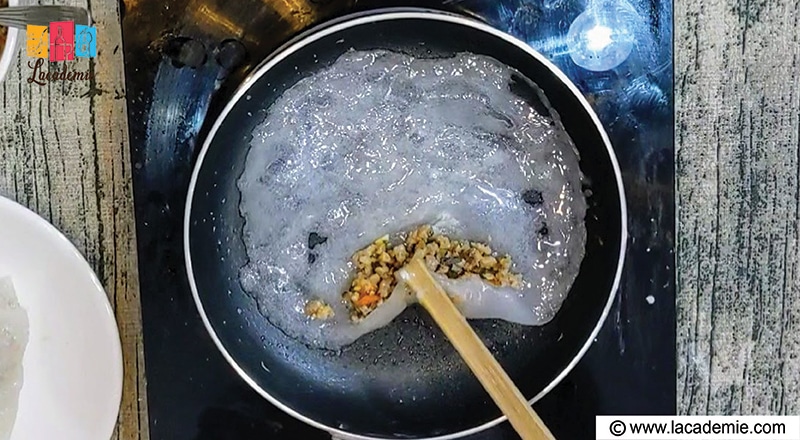
Note: After removing the rolled cakes from the steamer/pan, you should brush the surface of each one with some oil to prevent them from sticking with each other.
Step 5: Make The Dipping Sauce
Mix Vietnamese fish sauce, sugar, and lemon juice together in warm water. Stir well until they are completely dissolved. Mince garlic and red chili before adding them to the mixture. Give it a good stir.
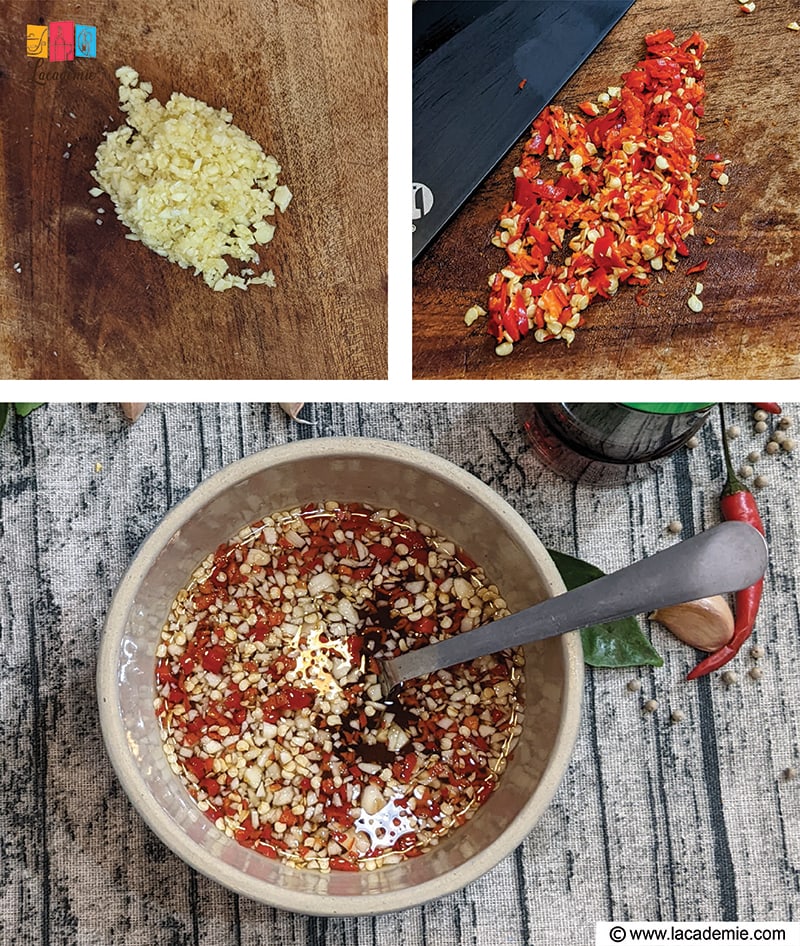
Step 6: Prepare The Garnishes And Serve
Cut the two types of pork sausage into bite-sized pieces. Rinse the vegetables. Cut the cucumbers into thin slices.
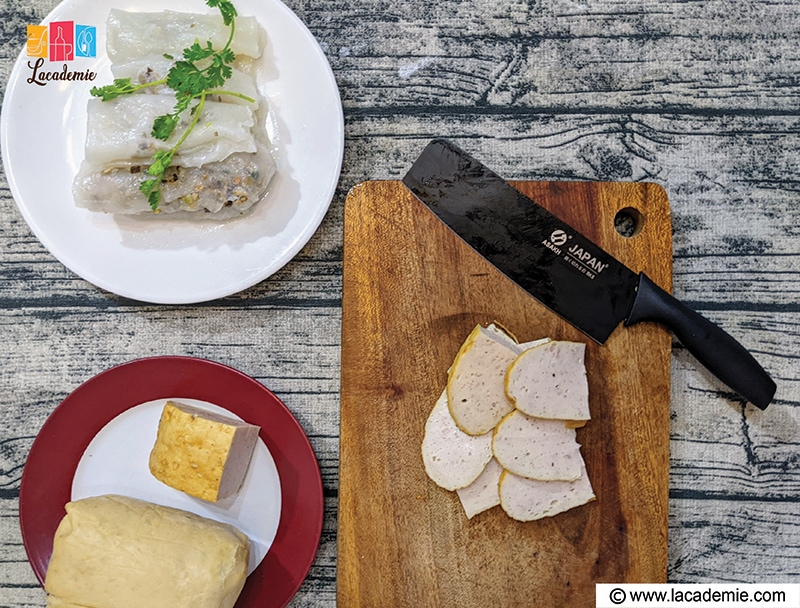
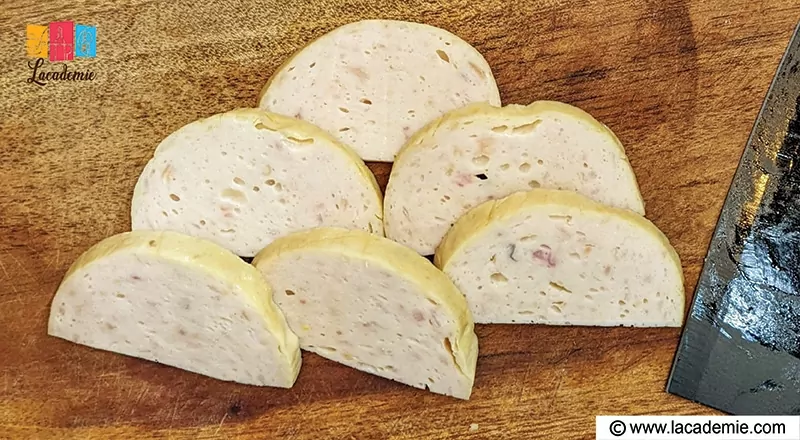
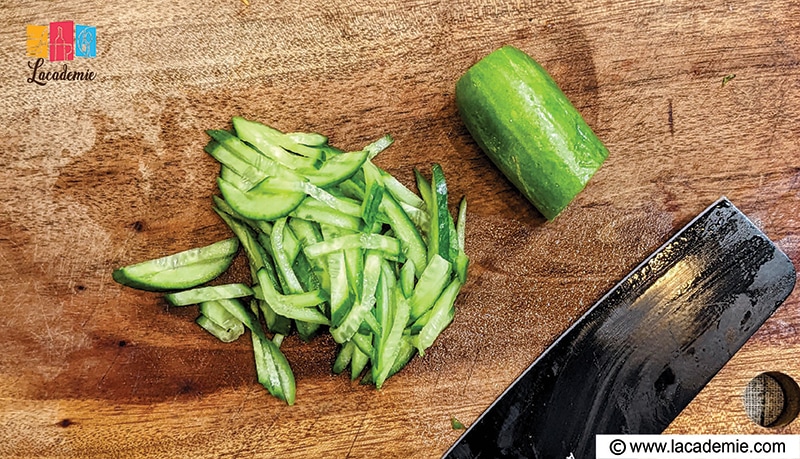
Plate the steamed rolled cakes and top with fried shallots. Put the pork sausage, vegetables, and dipping sauce bowls on the side. You can dip each cake into the sauce or drizzle the sauce directly over your cakes.
Tips For Making And Enjoying Vietnamese Rolled Cakes More Easily
Before placing a pan or steamer on the stove, let’s take a few minutes to read these easy tips. They will save you from common mistakes that many people make when preparing this delicious dish. Also, there are several tricks to make your meal healthier.
- If you cook with a nonstick pan, don’t turn up the heat too high. An overly heated pan cooks the rice sheets very quickly and doesn’t allow you enough time to form a perfect shape or thinness. Also, don’t use too much oil.
- You can add more tapioca flour to the batter to make your rice batter even more flexible. But don’t be too greedy: a large amount of this flour will cause the sheets to cling to the pan or cloth after cooking.
- Don’t hesitate to replace pork mince with other healthier types of meat. You can even substitute it for tofu if you want a vegetarian meal. Likewise, the pork sausage sides can be changed as well.
- When you prepare the dipping sauce, make sure to add minced garlic and red chili at the end so that they can float on the surface and create a nice look.
- It is a fantastic idea to add more ingredients to this recipe. You can add chicken eggs to the rice sheets when they have just become semi-translucent or richen the filling with minced shiitake mushrooms or jicama roots (watch out when using the latter as they can turn the filling watery).
How To Store Vietnamese Steamed Rolled Cakes
You can store Vietnamese steamed rolled cakes complete with fillings in the fridge for 2 – 3 days as long as you keep them in an airtight container. The dipping sauce should also be stored this way for the same amount of time.
But fresh sheets of rice batter can stay good for up to 7 – 10 if kept separately. You can make them ahead and stuff them with the filling on a different day. Meanwhile, frozen steamed rolled cakes can last for 3 months, supposing you have a freezer-friendly bag for them.
Make Vietnamese Steamed Rolled Cakes To Enjoy All The Flavors In One Bite
Each Vietnamese steamed rolled cake is such a beautiful work of art that you may hesitate to wolf it down. But just have one bite, and your mouth will experience how the rich, umami-packed filling meets the nutty rice sheet along with the tasty sauce that reveals flavors upon flavors.
Enjoy that sensation, and your only regret will be that you didn’t get to savor this Vietnamese delicacy sooner. You can have a few cakes for a light snack or make a large batch of them for a well-rounded meal. All the nutrients you need are right here.
Support me by liking and sharing this article if you like it. Don’t be afraid to express your thoughts or tell about your rolled cake experience in the comment section. I hope you will have a wonderful time with this amazing specialty!
Nutrition Facts
4 servings per container
- Amount Per ServingCalories837
- % Daily Value *
- Total Fat
41.4g
64%
- Saturated Fat 12.7g 60%
- Cholesterol 142mg 48%
- Sodium 1140mg 48%
- Potassium 667mg 20%
- Total Carbohydrate
70g
24%
- Dietary Fiber 2g 8%
- Sugars 4.9g
- Protein 40.6g 80%
- Calcium 36%
- Iron 3%
* The % Daily Value tells you how much a nutrient in a serving of food contributes to a daily diet. 2,000 calories a day is used for general nutrition advice.

